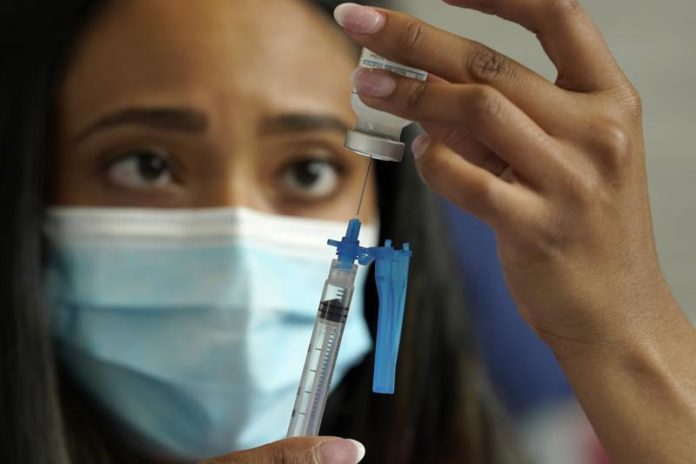
Arizona’s first known case of the omicron variant has been confirmed in Yavapai County, state and local health officials said Wednesday.
The Arizona Department of Health Services and Yavapai County Community Health urged people to get vaccinated, get a booster shot if eligible, stay home if sick, wear a mask and maintain physical distancing.
“It’s natural to be concerned, but we should avoid overreacting to this news,” Leslie Horton, director of the Yavapai County health agency, said in a news release.
Steve Elliott, a spokesman for the state health department, declined to release any additional information, including when the person was tested and whether he or she has traveled to areas of the world where the variant is known to be spreading. He said the agency is withholding information “to maintain patient privacy.”
New cases of COVID-19 in the U.S. climbed from an average of nearly 95,000 a day on Nov. 22 to almost 119,000 a day this week, and hospitalizations are up 25% from a month ago. The increases are due almost entirely to the delta variant, though omicron has been detected in about 20 states and is sure to spread even more.
Deaths are running close to 1,600 a day on average, back up to where they were in October. And the overall U.S. death toll less than two years into the crisis could hit another heartbreaking milestone, 800,000, in a matter of days.
Scientists monitor variants and the coronavirus’ evolution through genetic tests that are separate from the kinds of tests used to determine whether someone has COVID-19. This genetic sequencing allows scientists to monitor how the virus changes over time.
The coronavirus is continually evolving, but most mutations are inconsequential. At this point, scientists are trying to figure out whether omicron spreads more easily or causes more severe disease than the delta variant that now dominates in the U.S. They are also studying how well vaccines work against it.
Arizona on Wednesday reported 3,506 additional confirmed COVID-19 cases and 18 more deaths as the number of the hospitalized virus patients dipped slightly, according to the Health Services Department’s data dashboard.
There were 2,753 virus patients occupying inpatient hospital beds as of Wednesday, down from 2,800 on Tuesday, the high so far during the surge.
Hospitals statewide are crowded with both virus and non-virus patients. Only 6% of inpatient beds were available as of Tuesday, according to the dashboard.
However, Johns Hopkins University data showed Arizona’s seven-day rolling average of daily deaths rising over the past two weeks, increasing from 46.6 on Nov. 22 to 64.9 on Monday.
The rolling average of daily new cases also rose during the same period, increasing from about 3,964 to about 4,044.
Since the pandemic started, Arizona has confirmed just over 1.3 million cases and nearly 23,000 deaths.
Republished with the permission of the Associated Press.














